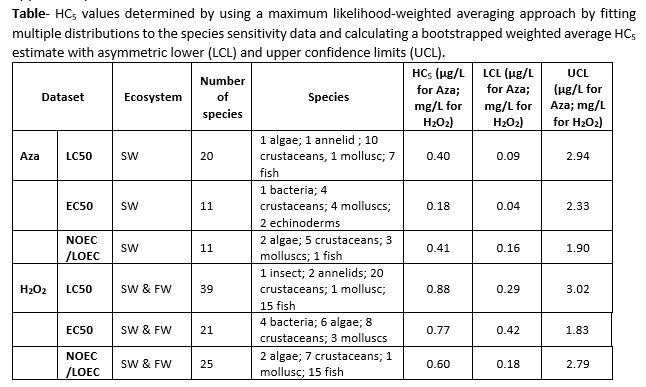SPECIES SENSITIVITY DISTRIBUTIONS FOR TWO WIDELY USED ANTI SEA-LICE CHEMOTHERAPEUTANTS IN THE SALMON INDUSTRY
As part of the design of risk-based post-deposit monitoring to manage the usage of authorized aquaculture drugs and pesticides, applicable thresholds and/or environmental quality standards (EQS) need to be proposed. These values are useful for determining thresholds and/or guidelines depending on the selected regulatory usage. One approach for EQS determination is to use interspecies variation in toxicity of a compound to generate a species sensitivity distribution (SSD) for a given endpoint from which an HC5 value (i.e. the hazardous concentration for 5% of species) can be extrapolated. Here, we construct and discuss aquatic SSDs for two widely used aquaculture anti-sea lice pesticides azamethiphos (Aza) and hydrogen peroxide. Literature was searched for available acute toxicity data (LC50, EC50, NOEC) for aquatic biota, and studies were assessed for quality and relevance. Data were further refined to include measurements per species (and life-stage where applicable). The focus of the study is on marine (SW) species however freshwater (FW) species were used to enhance sample sizes when sensitivities were not significantly different. Acute HC5 values are proposed and discussed in term of limitations and applicability.
